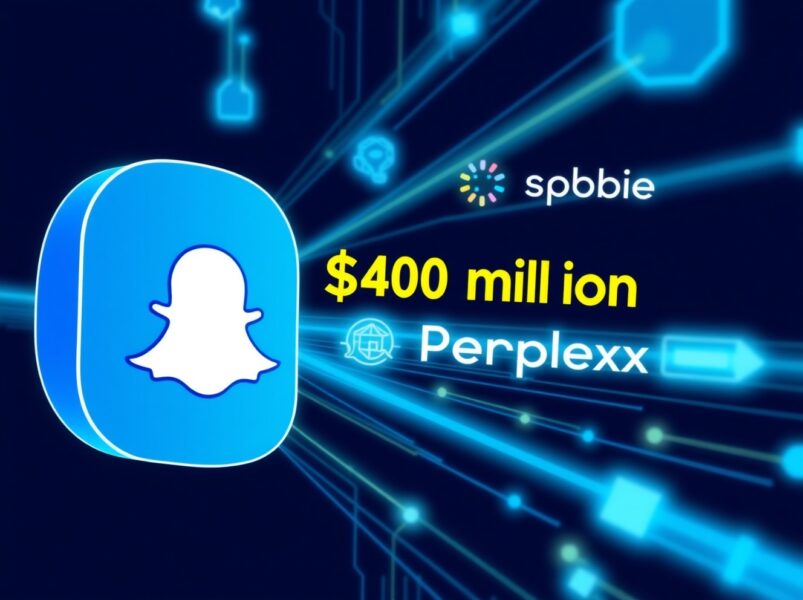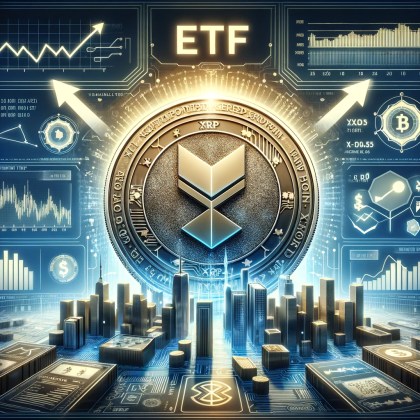dApps Demystified: The Future of Decentralized Applications and How They’re Changing the Web
dApps Demystified: The Future of Decentralized Applications and How They’re Changing the Web
“In 1999, the internet gave us access to information. In 2025, decentralized applications are giving us ownership.”
The internet is entering its next great transformation. Just as Web 1.0 democratized information and Web 2.0 revolutionized connectivity, Web3 is now redefining ownership, trust, and value.
At the heart of this revolution lies a quiet but powerful innovation — decentralized applications, or dApps.
From decentralized finance platforms moving billions daily to blockchain-based games and NFT marketplaces, dApps are no longer a tech experiment — they’re rebuilding the global economy, one smart contract at a time.
Whether you’re a billionaire investor, a venture capitalist, or simply trying to understand the next era of digital transformation, this article will demystify what dApps are, how they work, and why they’re becoming impossible to ignore.
What Are dApps — and Why Do They Matter?
A decentralized application (dApp) is software built on a blockchain or other distributed ledger. Unlike traditional apps (like Facebook or PayPal), which are controlled by a single company, dApps operate on decentralized networks, meaning no single entity can alter, censor, or own the data.
In simple terms, dApps replace the middleman with math. They use smart contracts — self-executing agreements written in code — to automate transactions, enforce trust, and ensure transparency.
Think of it this way:
* A traditional app = company + database + servers.
* A dApp = code + blockchain + community governance.
And that small difference changes everything.
Why Investors Are Paying Attention
Because dApps run autonomously and are governed by token holders, they represent a new class of assets — ones that generate fees, yield, and governance power, without centralized management costs.
According to DappRadar, the dApp ecosystem processed over $2.4 trillion in transactions in 2024, spanning finance, gaming, identity, and supply chain management.
The implications for investors? Enormous.
We’re not just witnessing a new tech trend — we’re watching the architecture of the global economy being rebuilt from the ground up.
The Architecture: How dApps Actually Work
At their core, dApps are built on blockchain networks like Ethereum, Solana, Avalanche, or Base. Let’s break down the essential components:
a. Smart Contracts
These are the “rules” of the dApp — written in code. They define how transactions occur, who gets paid, and under what conditions.
Example:
In a DeFi lending dApp like Aave, smart contracts automatically match borrowers and lenders, calculate interest rates, and manage collateral — without human intervention.
b. Blockchain
This is the public ledger that records all activity. Every transaction, ownership transfer, and interaction is visible, immutable, and verifiable.
c. Front-End Interface
This is what users see — usually built in standard web languages (HTML, CSS, JavaScript) but connected to the blockchain via wallets like MetaMask.
d. Tokens
dApps often have native tokens that power their ecosystems. Tokens can serve as currency, governance rights, or revenue-sharing tools.
Together, these elements create a trustless, borderless financial system — one that can operate 24/7, across jurisdictions, without intermediaries.
The New Internet Economy: How dApps Are Reshaping Wealth
If Web2 created trillion-dollar companies like Google, Apple, and Meta, Web3 is creating decentralized economies — where value flows directly to users and investors, not to corporate shareholders.
a. Decentralized Finance (DeFi)
DeFi dApps allow users to lend, borrow, trade, and earn yield on their crypto holdings — often outperforming traditional financial instruments.
* MakerDAO lets users mint stablecoins by locking up collateral.
* Uniswap enables peer-to-peer trading of assets, handling over $1 trillion in lifetime volume.
* Lido provides liquid staking, giving users yield on staked Ethereum.
Together, these platforms are building the backbone of a decentralized banking system that’s faster, cheaper, and globally accessible.
b. Real-World Assets (RWA)
Family offices and institutional investors are increasingly tokenizing real assets — real estate, gold, fine art, and treasury bills — on dApps like Ondo Finance or Centrifuge.
These innovations are unlocking liquidity from illiquid markets, making assets tradeable 24/7.
c. Gaming and Metaverse Economies
Gaming dApps such as Axie Infinity and Decentraland have turned players into stakeholders. In these ecosystems, players own digital land, weapons, and NFTs — real assets they can sell or trade.
The line between play and profit is blurring fast.
The Power of Decentralization: Why Control Is Shifting
Decentralization isn’t just a tech buzzword — it’s a philosophical shift.
In a centralized model, data, identity, and profits belong to corporations.
In a decentralized model, they belong to users.
This power shift is especially significant for high-net-worth individuals and family offices, who value privacy, sovereignty, and security.
* No single point of failure: Data is distributed across thousands of nodes.
* No intermediaries: Fees drop as middlemen disappear.
* No censorship: Transactions can’t be reversed or blocked.
For investors, this means a new kind of ownership — programmable, transferable, and borderless.
The Risks: Volatility, Regulation, and Reality Checks
Of course, the dApp revolution isn’t without challenges. Like any emerging industry, it’s evolving through experimentation and occasional chaos.
a. Security Risks
Smart contracts, while powerful, are only as secure as their code. Bugs and exploits can lead to losses — as seen in major DeFi hacks over the past few years. This has given rise to auditing firms like CertiK and Quantstamp, which now serve as the blockchain industry’s version of cybersecurity insurance.
b. Regulatory Ambiguity
Governments worldwide are grappling with how to classify dApps, tokens, and decentralized networks.
In the U.S., debates over whether tokens are securities or commodities continue to dominate headlines.
However, major players — from BlackRock to JP Morgan — are now experimenting with on-chain settlements, signaling institutional confidence in the long-term trajectory of Web3.
c. User Experience
Using dApps still feels like early internet — wallet connections, gas fees, and complex interfaces can deter mainstream adoption. But new account abstraction models are simplifying that. Soon, interacting with a dApp will be as seamless as logging into Gmail.
How dApps Are Creating New Wealth Models
dApps are not just new technologies — they’re new economic engines.
Here’s how they’re changing wealth creation:
a. Yield Generation Without Banks
Through DeFi protocols, investors can earn 4–10% yield on stablecoins — far above traditional savings accounts — by providing liquidity or staking tokens.
b. Tokenized Ownership and Governance
Investors can now own a share of protocols through governance tokens. These tokens often grant voting rights on decisions like fee structures, partnerships, or treasury spending — turning passive investors into active stakeholders.
c. Passive Income Through Infrastructure
Running validator nodes, providing liquidity, or staking tokens allows investors to earn yield simply by supporting the network — a 21st-century version of digital rent-seeking.
The Intersection of AI and dApps: The Next Frontier
In 2025, AI and decentralized applications are converging. AI models are being deployed on-chain, using dApps as distribution and monetization platforms.
a. AI-as-a-Service on Blockchain
Startups are creating decentralized AI networks like Bittensor (TAO), where contributors train and sell AI models directly — without centralized control.
b. AI Agents Managing On-Chain Portfolios
Imagine an AI managing your DeFi portfolio in real-time — executing trades, rebalancing assets, and optimizing yield across protocols autonomously.
This isn’t science fiction; AI-powered DeFi dApps are already in beta.
The synergy of AI + blockchain represents the birth of a new digital economy — one that is intelligent, decentralized, and unstoppable.
The Corporate and Institutional Race Into dApps
While retail investors explore DeFi, institutions are quietly building infrastructure behind the scenes.
* Visa is testing USDC-based settlements directly on Ethereum.
* BlackRock launched its first tokenized treasury fund using a dApp interface.
* Siemens issued a €60M bond on-chain via Polygon.
The world’s biggest companies aren’t betting if decentralization wins — they’re preparing for when it does.
This institutional momentum signals that dApps are evolving from experimental tools to enterprise-grade infrastructure.
Beyond Finance: The New Web of Trust
dApps aren’t limited to money. They’re reshaping identity, supply chains, and governance.
* Digital Identity: Projects like Worldcoin and ENS are creating verifiable, self-sovereign identities.
* Supply Chain: dApps on VeChain and OriginTrail provide transparent, tamper-proof product tracking.
* Voting and Governance: DAOs (Decentralized Autonomous Organizations) enable collective decision-making without corporate hierarchies.
We’re entering a world where trust is built on code, not institutions — and that has profound implications for how wealth, power, and value circulate online.
The Future: A Decentralized Internet of Value
The next decade will see the mass adoption of dApps across industries — from banking and insurance to art, gaming, and governance.
a. Seamless User Experience
As blockchain layers like Arbitrum, Base, and zkSync mature, dApps will become faster, cheaper, and more intuitive.
b. Tokenized Everything
From real estate to carbon credits, everything of value will exist as a digital asset — easily transferable through dApps.
c. The Rise of Sovereign Wealth on Chain
Family offices, hedge funds, and institutional players are building on-chain portfolios, leveraging DeFi and tokenized products for efficiency, transparency, and yield.
In essence, the internet is becoming an investment platform, and dApps are its engine.
Conclusion: Why You Can’t Ignore dApps in 2025
Just as no one could ignore the rise of the internet in 1999, no serious investor can afford to ignore decentralized applications in 2025.
They’re transforming finance, democratizing access to wealth, and creating a new class of digital assets that are borderless, programmable, and transparent.
For investors, entrepreneurs, and wealth managers, the question is no longer “What is a dApp?”
It’s “How can I use dApps to build, preserve, and multiply wealth in the new digital era?”
Because this isn’t just about technology. It’s about owning the infrastructure of the next economy.
dApps Demystified: The Future of Decentralized Applications and How They’re Changing the Web was originally published in Coinmonks on Medium, where people are continuing the conversation by highlighting and responding to this story.
You May Also Like

China Blocks Nvidia’s RTX Pro 6000D as Local Chips Rise

Revolutionary: Perplexity’s $400M AI Search Deal Transforms Snapchat for 940 Million Users
